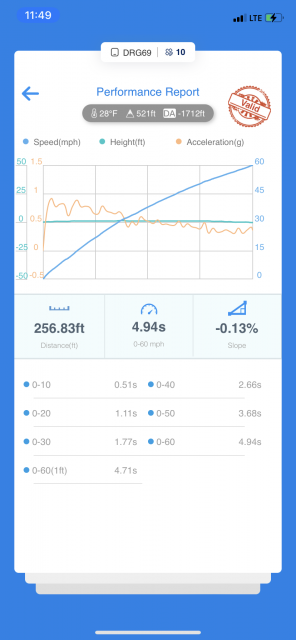Sorry on the late reply.
The primary values tuned in a 10 speed are actually essentially desired times for certain actions that happen, the torque rates involved in transferring torque, and when to shift.
As for what's adapted, each clutch has basically 5 states it can be in:
- Off -
The clutch is spinning freely with no torque transfer and no fluid in the clutch actuators.
- Fill -
This stage the clutch actuators are essentially filled with fluid and all the lash is taken out right up to the point of before the clutch bites. Being underfilled or overfilled here means either lash is left or you start grabbing early. Its actually got a huge effect on the feeling of a shift overall.
- Torque Transfer -
Torque is transferring into the clutch pack. Pressure is building up and its starting to be able to transmit a torque. Torque transfers from an offgoing clutch to an oncoming clutch. This is done by increasing the pressure applied on the clutch pack. Basically we're letting the torque going through the transmission change from one clutch pack to another.
- Inertia / Slip Phase -
This is when the clutches actually slip, and this is what the driver perceives as the "shift" as the engine speed actually changes and the ratio of the transmission actually changes.
To control the speed of this, we have to deal now with all the internal torques involved in the transmission as the ratio changes and we deal with the input and output shaft torques.
- On / Maintenance -
The shift is done, and all we need to do is keep pressure on the pack so it stays engaged and can transmit the torque we require of it. Essentially the clutch is held at line pressure, and that line pressure is doing all the holding. Modern transmissions vary this line pressure with torque to help minimize transmission losses and improve efficiency.
As for what the adaptive algorithm does: It estimates how much fluid is need to precisely get the "fill" phase to cause the clutch pack to just start to grab, this lets it start the shift faster and smoother. This can vary as things wear, and varies wildly with trans-fluid temperature too. It learns this over the temp range and lifetime of the trans.
During torque transfer, the tune commands a set rate and time for the torque to transfer. The adaptive algorithm basically tries to figure out for EACH clutch, what the pressure to torque relationship is, so that it can hit the desired rates.
We as drivers shouldn't even notice the fill/torque transfer, we only perceive them typically when we click a paddle commanding a shift, as its the time it takes from us pressing a paddle and starting to feel the gear change. The faster the transmission does these, the more snappy those paddles feel, and the overall shift feel also is much better.
During the inertia phase, the ratio of the transmission is changing, and we're balancing two competing things: wanting to shift fast to minimize slip and go fast, and wanting the shift to be smooth without causing any upset torque on the output shaft that we feel as getting hit into our seats or the car stuttering, etc.
The transmission again is trying to adapt what pressures it needs to hit the requested times and torques, and doing so without tying up the transmission, flaring, etc.
The maintenance phase again, is the transmission learning the minimum amount of pressure needed to hit a set torque.
As for how Ford specifically achieves this, the answer is by the algorithms measuring what they can and assuming what that means. It can detect underfill, overfill based on how the input shaft speed responds as it fills a clutch. It estimates the torques on the clutches and tries to match the pressures so that its estimated torque is what it desires. It does this on every shift, sans conditions it considers it cant learn anything in.
When you clear the transmission adaptives, its essentially use base table data to control everything. The algorithms involved aren't necessarily perfect either. They are designed to be robust, and sometimes robust algorithms sacrifice perfection, and ultimately its not precisely measuring everything, its got estimations of whats actually occurring, and sometimes that limited data restricts how well it does.
Does driving soft vs driving hard give you different adaptive outcomes? Im not sure. The way the tables are setup for most adaptives is Trans Temp vs Torque vs Learned value. So it learns different values at different temps and torques, essentially requiring you to drive in all scenarios to learn. Some things it learns though, such as estimations of clutch friction and the like, arent as dependent. Typically if they feel they cant learn anything based on you driving with too little torque, or too much torque, wrong engine RPM range, temp range, etc.. they just dont do any adaption learning at that time. Id suspect youd want a varied range of driving to learn best.

1

